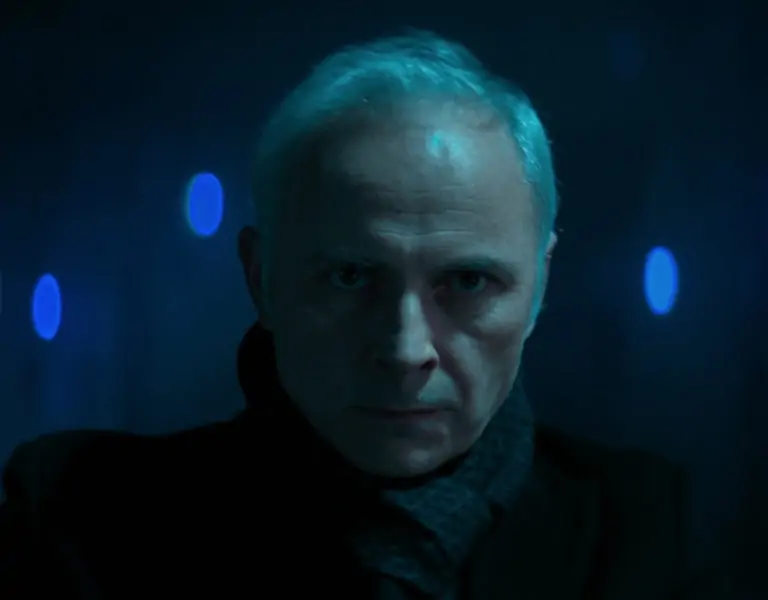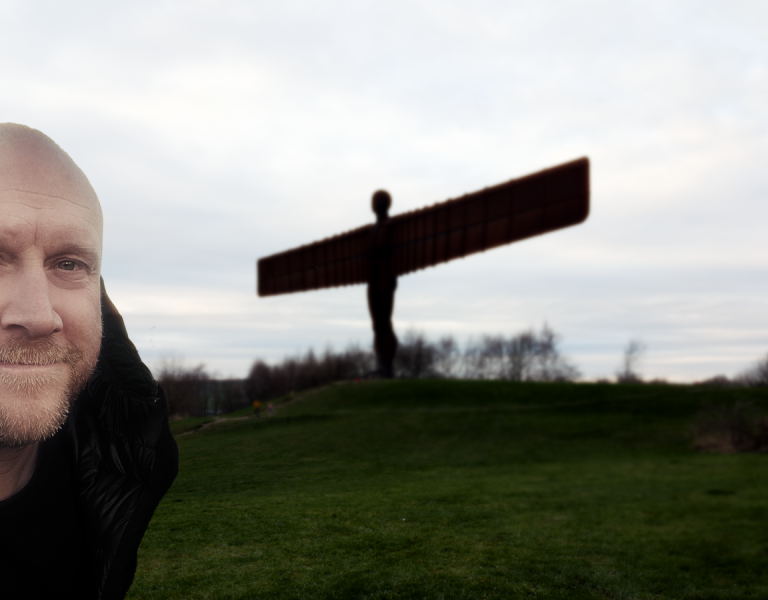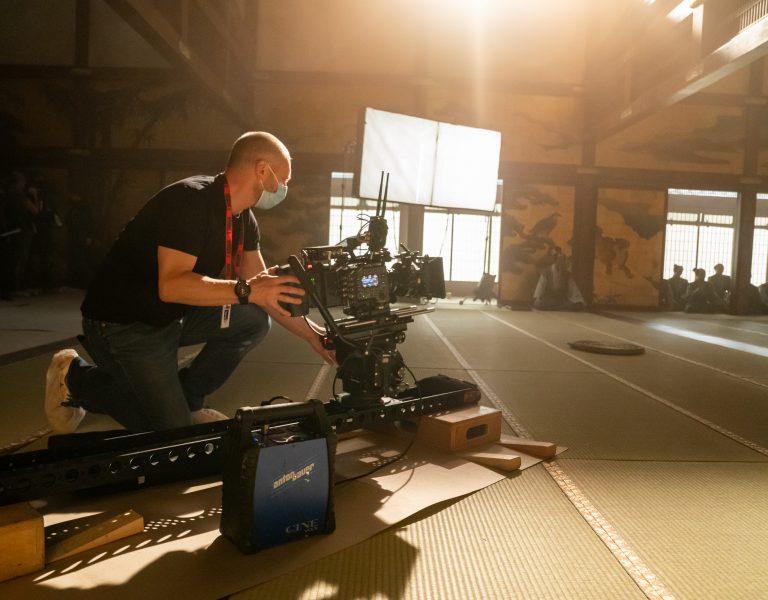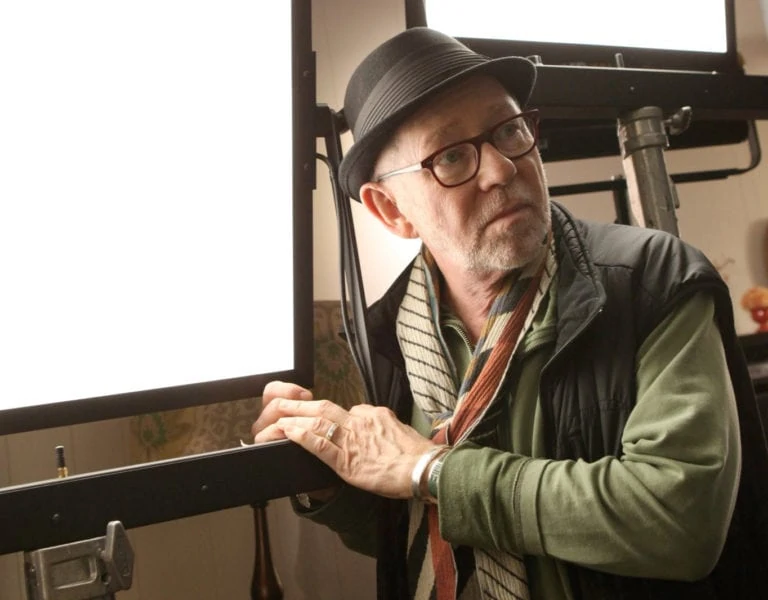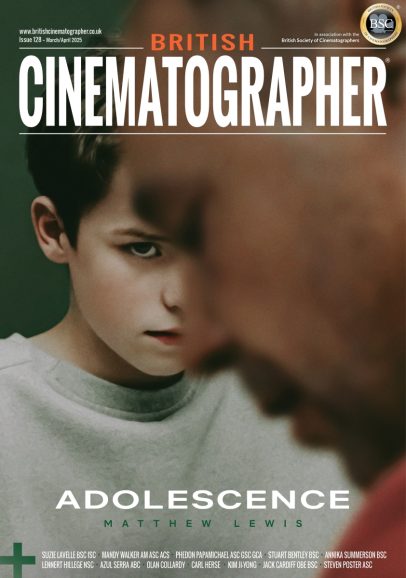BIRDS OF A FEATHER
Cinematographer Agnesh Pakozdi builds on her career-defining collaboration with Elene Naveriani with the pair’s most lauded film to date, a subtle portrayal of feminism in smalltown Georgia.
48-year-old Etero has never wanted a husband, but after a life-upending accident, she finds herself passionately falling for a married man in Blackbird, Blackbird, Blackberry. Drawing from Georgian writer and feminist activist Tamta Melashvili’s novel, director Elene Naveriani (they/them) paints a subtle, sensual portrait of an older woman’s role in society in provincial Georgia in this Cannes 2023 Directors’ Fortnight hit.
Hungary-born Agnesh Pakozdi has had the pleasure of being Naveriani’s cinematographer on all of their long and short-form projects together (including features I Am Truly a Dunirop of Sun on Earth and Wet Sand). Not only do their visual sensibilities strongly align, but the duo share a deeper connection, having witnessed the shifting political landscapes of their respective homelands: in Pakozdi’s case, the relatively peaceful end of communist rule in Hungary in 1989; and for Elene, Georgia’s more tumultuous secession from the Soviet Union in 1991.

While Naveriani has settled in Switzerland following film school in Geneva, Pakozdi’s own path took her to the Berlin University of the Arts, before specialising in cinematography at the prestigious Deutsche Film- und Fernsehakademie Berlin. “Politically, I also think we’ve been on a similar path since the beginning, in terms of feminism, criticism of the patriarchy, and standing up for rights for marginalised people,” Pakozdi points out. “These topics deeply connect us.”
When Naveriani approached Pakozdi with the idea for their latest feature, the pair had just finished shooting Wet Sand in Georgia. The director had devoured Melashvili’s novel on her flight back from the shoot to Switzerland, and was convinced they had to make a film about it. They even already knew who’d be playing Etero: the remarkable Eka Chavleishvili from Wet Sand.

Pakozdi didn’t take much persuasion to join her creative partner on the project, and quickly began “a huge amount of work” researching locations in Georgia. “Elene already has a region or area in mind for each story,” says the cinematographer of their working process. “Georgia is a small country with a beautiful and very diverse landscape. What we did was have a location tour a year before shooting because locations are very important for inspiration when Elene is working on the script. That’s how our discussions always start: first with the story, then the locations.”
A patchwork of five or six different villages in Georgia’s central Imereti region, halfway between capital Tbilisi and the Black Sea, were used for filming. These locations were a key reference in the director and DP’s discussions regarding the look. During their research phase, they saw a lot of traditional Georgian interiors and were amazed by the colour combinations used. “There were these deep violets with crazy greens and reds… People used very specific colour combinations,” Pakozdi remembers. “The main concept for the set design is based on what we found there.”

Goldin to Ozu
Blackbird follows a woman discovering her body for the first time, so depicting this sensuality on the screen was an early conversation. In this regard, Pakozdi mentions Ulrich Seidl’s Paradise: Love, about an older Austrian woman who travels to Kenya as a sex tourist. “Seidl’s work was a reference [in] showing the human body in its natural way,” she notes.
Visual inspirations for all of Pakozdi and Naveriani’s features have included painter Edward Hopper, photographer Nan Goldin and filmmakers Kenji Mizoguchi and Yasujirō Ozu. “We also often hear people compare our films to Aki Kaurismäki’s,” the DP adds with a smile. “I can see the similarities but he’s never really been a direct inspiration for us – it just happens.”
Leading up to the shoot, Pakozdi spent around eight weeks in Georgia in hard prep. Rehearsals were a big focus – especially for the erotic scenes between Etero and Murman (Temiko Chinchinadze). “The actors had never done these kinds of scenes before – it’s not common to see male nudity, especially in Georgia,” she explains. “But it was important for us to show this – and to see natural-looking, older bodies on screen.”

While she didn’t insist on attending every rehearsal, the DP found the experience amazing – both for generating ideas for her camerawork and allowing the actors to become accustomed to her presence. “What I would do is just sit and watch them. At some point, I’d stand up and walk in the space with them – just looking at them from different angles, not even with the camera. It’s so they could just get used to me – that I wasn’t just sitting and watching – so when we’re on set, they know it’s the same me, just with a big camera.”
A self-confessed “big fan” of ARRI, Pakozdi chose the Alexa Mini LF for Blackbird, highlighting its colour science capabilities. “I love what you can do with skin tones, both on set and in post-production,” she elaborates.
She wanted to pair some more vintage lenses with the camera. Having worked as B-camera operator on Brandon Cronenberg’s 2023 horror Infinity Pool, she’d got to know Canon K35s well – but getting hold of them in the post-pandemic filming boom was tricky. After asking what felt like half of Continental Europe for a set, she managed to get some sent from Germany. A set of Canon FDs were also used.

Mutual understanding
Pakozdi’s gaffer, Tengo Kasradze, had impressed as her best boy on Wet Sand and they cemented their shorthand on Blackbird. “In an ideal world, the gaffer and DP should understand each other without words – and that’s what Tengo and I achieved on Blackbird. When we put the lighting list together, we talk about units, but once we are on set, we no longer talk about units, just characteristics. I love to give the gaffer a free hand in units and see how he builds upon what we agreed on.”
Capturing the intimate scenes between Etero and Murman was carefully considered. The pair have their first sexual encounter in the decidedly unromantic setting of a storage cupboard. “We wanted to make it cosy, despite being such an uncomfortable place,” says Pakozdi. “It’s a warm atmosphere thanks to the lighting (10K tungsten Fresnels), and it’s also a warm image; I shot the whole film warmer, above 6,000K.”

While Pakozdi’s camera is close to the couple’s faces, she says she never wanted to “show their pores”. “The reason we are close is to try to give this sense of order, or to show the moment when these feelings are rushing through her mind. The distance to their bodies is also very important. Although you need that intimacy, from the moment they connect you can go a bit further back so you’re not in that ‘ball of air’ between two lovers. I can still show their bodies and show their passion, but I think when the camera goes between them, it’s breaking their intimacy.”
The biggest challenge for the filmmakers was Georgia’s inclement weather. “It was madness,” says Pakozdi. “There were hardly any chances to shoot just one scene in the same weather conditions. I was trying to hide from the rain and play with the white balance, but you can’t do too much. Of course, you could add some light to try and enhance the contrast, but the image is suffering.”
She adds: “My colour grader Rodney Musso and Jean-Baptiste Perrin in Geneva performed magic with the colour correction!”

Collaborating with DIT Niko Tarielashvili, Pakozdi used two show LUTs for the 32-day shoot: one for daytime and one for night. “Sometimes I adjusted the LUTs during the shoot. I could easily do this, as Niko is a great colourist as well.”
Filming was completed in October 2022, and the grade was finished in April 2023 – just a month before it bowed at Cannes. So, what’s the secret to the success of Pakozdi’s ongoing partnership with Naveriani? “Our success is in [our] thorough and deep preparation. Based on that, we know exactly what we are looking for on set, we explore more and more our fields of focus. I enjoy a lot of freedom in creating images, and this freedom lands very much exact.
“We have the luxury of making cinema which really is about cinema. By saying that, I’m not just talking about the aesthetics but also the circumstances of production. To take your time to see, to listen, to be attentive. It makes a huge difference when you have to produce two or three minutes a day, rather than five or six, with one camera. It’s a very respectful and autonomous collaboration.”




